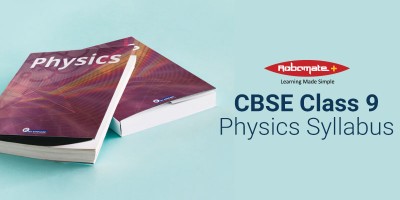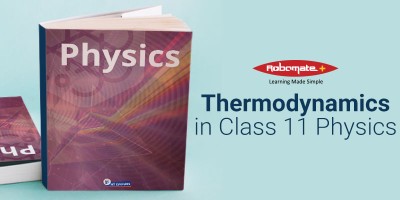State Board Commerce (XI-XII) - Test Papers
CBSE Class 9 Physics Syllabus
Physics is an important subject whose foundation is important either you opt for science or engineering subjects. The institute is reputed to develop and modify the CBSE Class 9 Physics Syllabus as per the recent developments. The study material is prepared as per the balanced NCERT syllabus for class 9 science pdf pattern. The class 9 biology NCERT study material helps students improve their academic performance and score well in the exams. It provides a number of sample papers and question papers to test the students understanding of the studied chapters.
The revised syllabus is available online and one can compare the chapters and sub-chapters which are modified, added or deleted.
CBSE Class 9 Biology Syllabus
The institute provides an elaborate CBSE Class 9 Biology Syllabus and also the solutions to the questions as per the NCERT syllabus for class 9 science pdf. Each chapter can be understood in an easy way because of detailed explanation and flow of the language. The syllabus is well-structured; class 9 biology NCERT books will be very helpful in scoring good marks in their examinations. Students should solve the sample questions which are present at the end of each chapter. The mantra to score well is to follow the syllabus, solve the question as per NCERT syllabus for class 9 science pdf and take-up sample question papers as many as possible.
CBSE Syllabus for Class 9 Chemistry
One can download the complete syllabus of CBSE Syllabus for Class 9 along with NCERT solutions from the official CBSE website in pdf or word document format. The institute also provides you the latest chemistry syllabus as per CBSE board. The old and new syllabus can be compared to get clear about the changes. Few of the chapters have been added and few removed to meet the standards of the education. The changes in the syllabus are made as per the advancement in the field. The syllabus does not change overnight. It requires lots of discussion about board members to analyze the importance of addition or deletion of the topic. The board changes the question paper patterns and sample papers to improve the standards of the education and at the same time consider students adaptability to the modifications which are being incorporated. Being one of the best educational Boards of India, there is lot of responsibility on Board members to educate the students to prosper at national and international levels.
CBSE Syllabus for Class 9 Maths
CBSE Syllabus for Class 9 Maths develops the students foundation for higher classes and also competitive exams. The syllabus is elaborate which has a number of topics and subtopics to be studied during the whole academic year. CBSE has set a standard syllabus paper and is quite informative for the students to sharpen the skills for the higher education. Each chapter is explained in a stepwise manner making it interesting and explanatory. All the chapters are solved in a simple and easy to understand procedure and tricks.
Before preparing for any subjects it is important to know complete syllabus. The study material for clearly defines the topics and subtopics as per CBSE Syllabus for Class 9 Maths. The study material also gives various methods (long and short) to solve the problems.
CBSE Syllabus for Class 9 Maths
Chapter 1 – Number Systems
Chapter 2 – Polynomials
Chapter 3 – Co – Ordinate Geometry
Chapter 4 – Linear Equations In Two Variables
Chapter 5 – Introduction To Euclids Geometry
Chapter 6 – Lines And Angles
Chapter 7 – Triangles
Chapter 8 – Quadrilaterals
Chapter 9 – Areas Of Parallelograms And Triangles
Chapter 10 – Circles
Chapter 11 – Constructions
Chapter 12 – Heron’s Formula
Chapter 13 – Surface Areas And Volumes
Chapter 14 – Statistics
Chapter 15 – Probability
Thermodynamics in Class 11 Physics
Introduction:
The word “thermodynamics” is derived from two Greek words thermé which means heat and dynamics which means force. The thermodynamics was first established for equilibrium state by
Rudolf Julius Clausius in 1850 and later it was extended to non-equilibrium states. The word thermodynamic can be defined as movement or flow of heat.
What is Thermodynamics?
It is a branch of physics which deals between the relation of heat and other forms of energy. The heat can bring about changes in mechanical, electrical, or chemical energy. Thermodynamics explain how the heat energy is converted into other forms of energy.
What is Thermal Energy?
Thermal energy refers to the energy produced by the movement of particles within an object producing heat. The higher the movement of the particles, higher is the heat generated.
Thermodynamics Timeline:
Thermodynamics since its invention has led to development of many thermodynamic principles, here we highlight a few
- 1712: Newcomen invented improved steam engine
- 1798: Count Rumford developed conversion of work into heat
- 1824: Carnot discovery of ‘Reflections on the Motive Power of Fire’
- 1840: Conservation of energy principle
- 1850: Second Law of thermodynamics
- Classical Thermodynamics: This section provides students information about the behavior of matter under study in a broad way. The students will learn the measurement of heat and temperature. The pressure and heat is calculated in terms of units to understand the characteristics during the process.
- Statistical Thermodynamics: This section deals with the properties of each of molecules and the behavior of the molecule and its interaction to characterize the behavior of a group.
- Pure Component Thermodynamics: This section deal with the study of a system in its natural environment.
- Solution Thermodynamics: This section deals with the system which contains more than one chemical in the mixture.
Let us study Classical Thermodynamics in brief
Laws of Thermodynamics:
Zeroth Law of thermodynamics:
This law came into existence after 1st and 2nd law; hence it is called as zeroth law.
Zeroth Law states that “if two thermodynamic systems are in thermal equilibrium with a third systems then they are in thermal equilibrium with each other.”
The first law of thermodynamics: According to this law the energy is always conserved. It states that energy can neither be created nor destroyed, but the energy changes it form from one to another.
It is also called as conservation of energy principle.
Second Law of thermodynamics:
It is also called as Law of Increased Entropy. As per this law the quality of energy deteriorates over a period of time.
This law states that thermal energy flows from energy rich area to energy deficient area. This is an important aspects and can be exemplified by the cooling effect produced by air conditioner.
Third Law of thermodynamics:
It states that the entropy of a system is zero if the temperature of the symtem is equal to absolute zero (0 K). Entropy can be defined as motion of the molecule which zero at an absolute temperature of 0 K.
What is Enthalpy?
Enthalpy is the measurement of energy in a thermodynamic system. It is the energy of the system which is equal internal energy of the system and also the the product of volume and pressure.
Mathematically, the enthalpy, H, equals to the sum of the internal energy, E, and the product of the pressure, P, and volume, V, of the system.
H = E + PV
What is Entropy?
Entropy is a thermodynamic quantity whose system’s thermal energy is not available for conversion into mechanical work. This depends on the randomness or disorder of a system.
Different Measures of Energy:
Internal Energy:U=∫TdS−PdV+∑iμidNi
Helmholtz free energy: F = U – TS
Enthalpy: H = U + PV
Gibbs free energy: G = U + PV – TS
Solved Examples:
Example 1: Calculate ΔG
at 290 K for the following reaction:
2NO(g)+O2(g)→2NO2(g)
Given
ΔH = -120kJ
ΔS=−150JK−1
Solution: To make the unit of ΔS same as ΔH, we have to convert the unit of ΔS as follows,
ΔS=−150:J/K(1:kJ1000:J)⇒ΔS=−0.15kJ/K
We know that,
G=U+PV−TS⇒ΔG=ΔH−TΔS
So,
ΔG=−120:kJ−(290K)(−0.150:kJ/K)⇒ΔG=−120:kJ+43kJ⇒ΔG=−77:kJ
Therefore, ΔG is -77kJ







